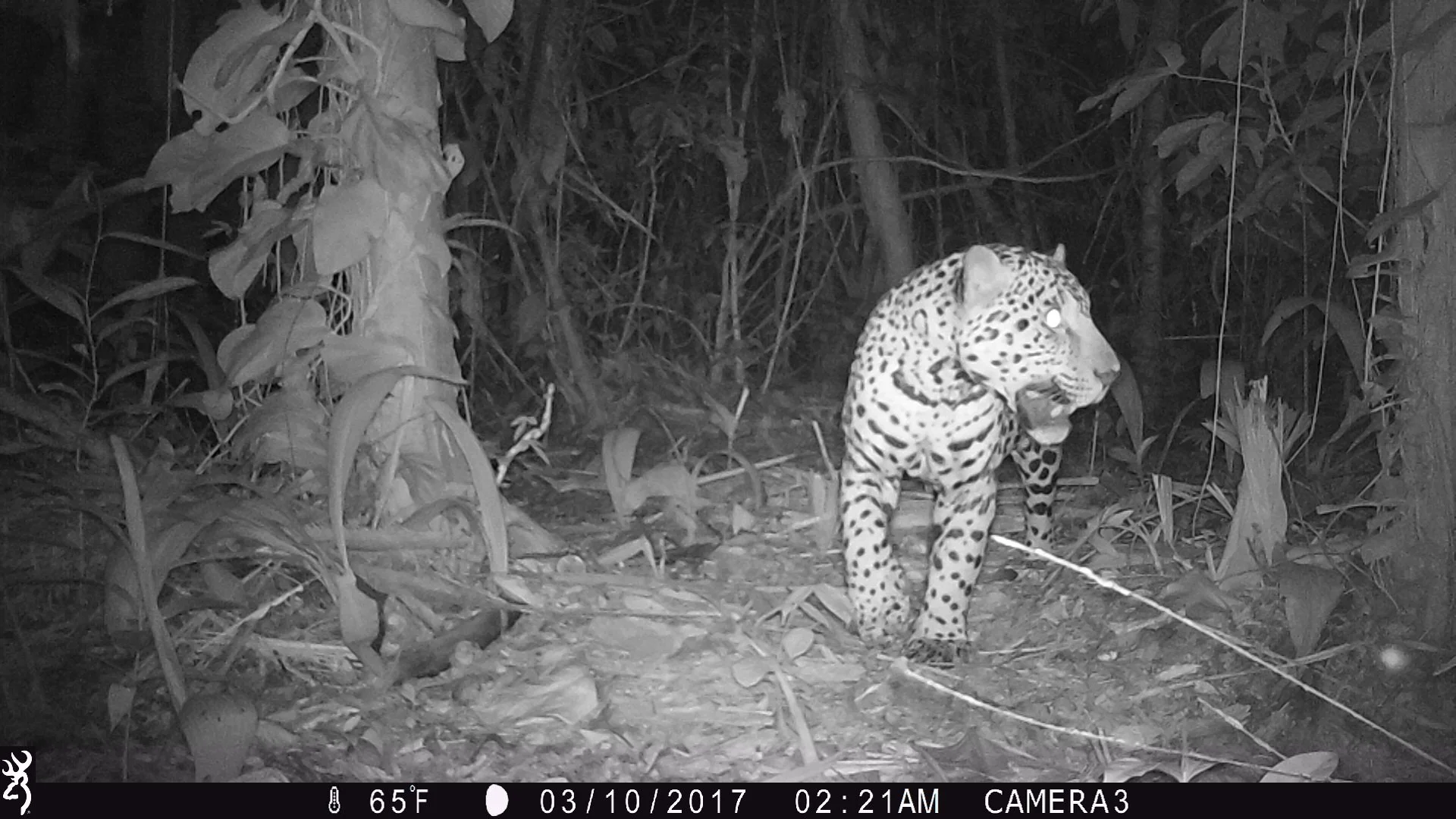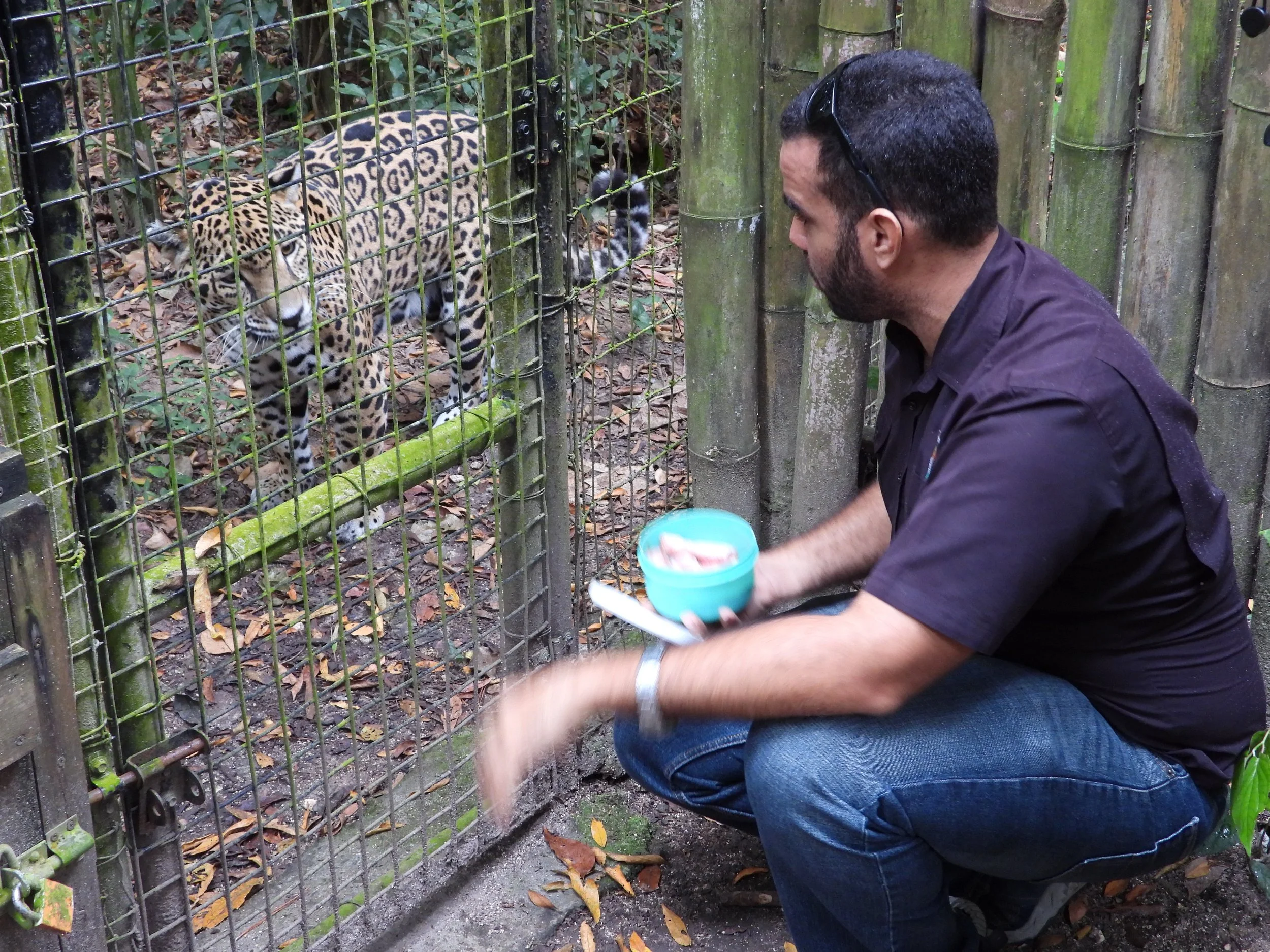K-2 ToolKit: Into the Jungle - Jaguars
Welcome to our Into the Jungle - Jaguars Toolkit
Jaguars are one of the most beautiful and powerful animals in the Americas. For students, they’re an instantly recognizable Big Cat that can serve as an excellent introduction to the ecology of the rainforest, the many animals that live there, and the importance of protecting the this ecosystem from destruction.
In this toolkit we make learning about jaguars fun and engaging for your students. Our resources clearly and simply explain the science and conservation status of jaguars for the K-2 level. This includes videos, reading activities, and more! Depending on their use, these resources can provide 30-60 minutes of classroom education on wildlife conservation and education.
Let’s start with a quick video that we think will engage your students!
What’s Covered in this Toolkit?
Written content on jaguars in Belize to enhance your lesson, and engage your students. These include videos and photos taken from the Belize Zoo and from our trail cameras in Belize.
A 3 minute video that includes important information about jaguars from the experts at the Belize Zoo.
A 10 minute narrated video that explores the wildlife that share the Belize rainforest with jaguars. This exercise includes comprehension questions for students. Included are talking points to ask your students about the video to ensure comprehension.
A virtual children’s book, Nacho House Cat, to introduce the main concepts of jaguars in language easily accessible to a K-2 audience. Included are talking points to ask your students about the book to ensure comprehension.
An Ask a Scientist feature that allows you and your class to ask questions from our team and get an audio file response to play for your class!
The Story Starts Here …
Sneaking quietly through the jungle of Central America, the Jaguar’s whiskers twitch as it spies a Agouti – a large rodent related to the Guinea Pig. As this nighttime hunter silently creeps up on its prey, its spots shine in the moonlight, and its powerful jaws many times stronger than a human’s prepare to strike.
A jaguar in Belize captured on Inspire EdVentures camera traps (2017)
Jaguars might be mistaken for leopards because of their spots, but leopards live in Africa and Asia, not the Americas. In the Americas there are two big cat species - the jaguar and the puma. Jaguars are the third-largest big cat in the world - only behind the tiger and lion.
While there have been some sightings of jaguars in some southwest states, you can no longer find jaguars in the United States. However, in Belize, a country only as big as a small U.S. state, you can find up to 700 jaguars who call these jungles their home.
Jaguars don’t hunt humans – they don’t even like to be around humans. But in Belize, the jaguar's territory is shrinking, as more and more people are building farms and towns in their former range.
Because of this, some jaguars have started hunting animals like cows, chickens, and sheep. These jaguars are called problem jaguars, and sadly many are killed by farmers or by poachers, people who hunt protected animals like the jaguar illegally.
A jaguar at the Belize Zoo
In Belize, organizations like the Belize Zoo take in problem jaguars so they are not killed. Sometimes they are moved to other parts of the country. Other times, they are kept at the Belize Zoo as “ambassadors” to teach people about jaguars.
While there are many jaguars in Belize today, there may not be in the future. Over the past 20 years, jaguars have lost almost one fourth of their population, and one fifth of their territory.
If we want to see these beautiful cats in the future, the jungles that jaguars call home need to be protected, and people must be educated on why they should not kill jaguars. You and your students can help, by raising awareness about jaguars to your family and friends.
Fun Facts
Some jaguars are born all-black, and are sometimes called panthers - but they are in fact the same species! In the sunlight, you can even see their spots!
Jaguars were considered sacred species to the Mayans, who still live in Belize today! Jaguars are called balam in the Mayan language, and were believed to be connected to the Mayan underworld, or land of the dead.
Male jaguars are larger than females, and jaguars are larger near the equator, like in Brazil. In Belize, jaguars can reach up to 125 pounds, but in Brazil they can grow to over 200!
A jaguar’s spot is called a rosette, and the pattern of rosettes on their coat is unique to the jaguar - just like a human fingerprint!
Reading Activity for the K-2 Toolkit
Nacho House Cat
A children’s book that explores why jaguars belong in the jungle.
Nacho House Cat is authored by Ashley Moseley with the support of Michael Windelspecht as science consultant. Copyright 2025
Talking Points and Activities for the Book
Access the digital version of the book - you will need to use the access code given when you registered for the toolkit. Didn’t register yet? No problem, click here.
Download the Talking Points Activity Guide
Download a jaguar coloring page and make your own rosettes.
Trail Camera Video Activity
Jaguars live beside hundreds of other animals that also call the rainforest home, from birds to large mammals and even other big cats! In this video, we go through some of the wildlife we’ve captured on our trail cameras in Belize, then look at some of the jaguars we’ve caught on camera. The video is approximately 10 minutes long, and we’ve included some talking point questions for your students to help them get the most out of the experience:
Talking Points and Activities for the Video
Download the Talking Points guide.
Download the STEAM Activity.
Teacher Resources
Inspiring Animals - Jaguars. The Inspiring Animals series on our podcast provides insight into issues associated with threatened animal species. Designed for the 8- 13 year range, this is suggested as a teacher resource to understand more about jaguars.
How to Identify Jaguars By Their Spots. An article we prepared on our jaguar identification projects in Belize. Lots of great pictures and an explanation on what jaguar spots tell us.
Science of Jaguars: Our article on jaguars. A great reference point for questions that may pop up in class.
Additional IE Resources on Jaguars. A downloadable list of the jaguar resources on our website.
Ask A Scientist. Our new feature that lets teachers, and their students, ask a real scientist their questions on jaguars and wildlife conservation.
Science consultant: Dr. Michael Windelspecht michael@inspire-edventures.com
Need assistance? Email us at experiences@inspire-edventures.com
Version 1.2 November 2025



